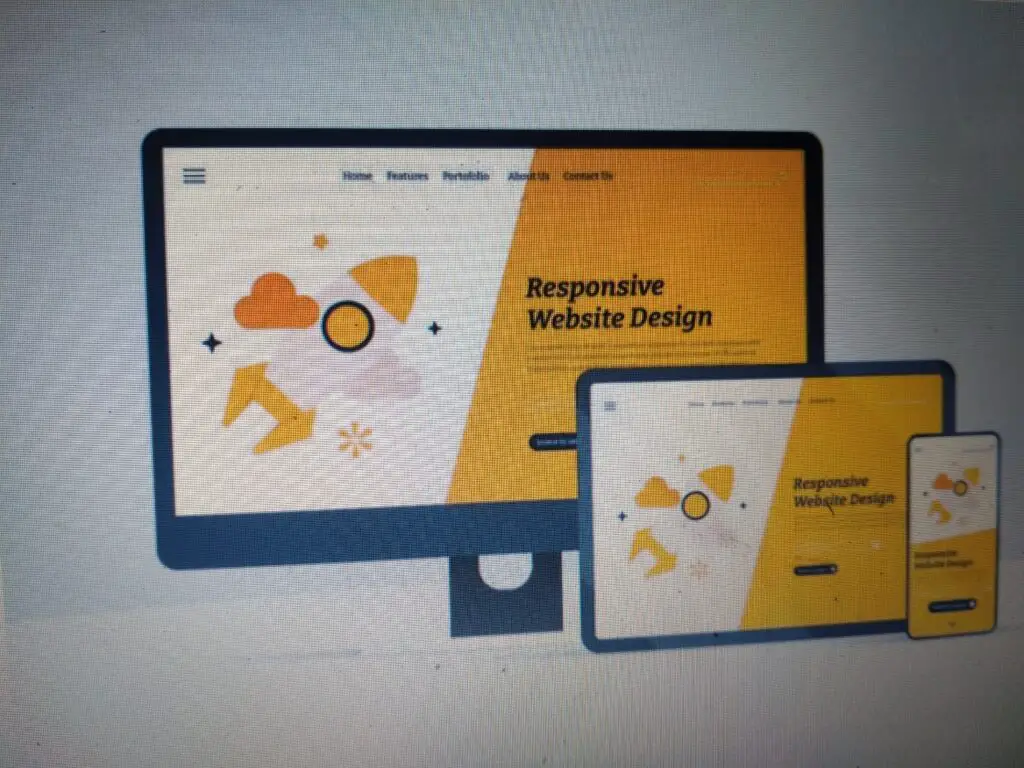In today’s digital age, your website is often your storefront window to the world. If you make a website, your creativity, your business, or your personal brand. But just like a physical store, a website needs robust security measures to deter unwanted visitors and protect your valuable assets.
This guide delves into the essential steps to fortify your website’s security, making it a safe haven for you and your visitors.

Make Website and Understanding the Threats: Malicious Actors and Their Motives
Securing your website starts (make website) with recognizing the potential threats. Here are some common malicious actors and their motivations:
- Hackers: These can be individuals or groups with varying goals. Some seek to steal sensitive data like passwords or credit card information. Others might disrupt website functionality through attacks like denial-of-service (Dos).So make your website (make website)in such a way that they can’t steal any of your stuff and data.
- Spammers: These aim to flood your website with unwanted content or advertisements, potentially harming your reputation and user experience.And you may know better how you can avoid them by designing your website.
- Malware Distributors: Malicious software (malware) can be injected into your website (make website), infecting visitors’ devices with viruses, spyware, or ransomware.
Make Website Building the First Line of Defense: Essential Security Practices
Here are some fundamental practices to safeguard your website:
- Secure Sockets Layer (SSL) Certificate: An SSL certificate encrypts data transmission between your website and visitors’ browsers. This ensures sensitive information like login credentials or credit card details remain secure. Look for the padlock symbol and “HTTPS” in the address bar to identify websites with SSL certificates.
- Strong Passwords and Two-Factor Authentication (2FA):
- Prevent using easily guessed, weak passwords. Make use of a mix of numbers, symbols, and capital and lowercase characters. A password should not be used on more than one platform. Make and save secure, one-of-a-kind passwords by utilizing a password manager.You make your website (make website) so much set room and work so hard on it, if someone steals your website (make website) tomorrow, how sad you will be, so make its password strong so that no one can steal it.
- 2FA: This adds an extra layer of security by requiring a second verification step beyond just a password, like a code sent to your phone or generated by an authentication app.
- Regular Updates: Outdated software, including content management systems (CMS) like WordPress, plugins, and themes, can contain security vulnerabilities. Regularly update your website’s (make website) core software, plugins, and themes to address known security issues.
- Secure Your Hosting Provider: Choose a reputable web hosting provider that prioritizes security. Look for providers offering features like firewalls, intrusion detection systems, and regular backups.
- User Permissions: Manage user access levels within your website’s (make website) administration panel.According to their roles, only provide people the access they need.
Make Website Active Defense Measures: Maintaining Vigilance
While the practices above establish a solid foundation, website security is an ongoing process. Here’s how to stay vigilant:

- Make Website Security Scans: Regularly scan your website for vulnerabilities using security scanners. These tools can identify potential weaknesses in your website’s code, configuration, or plugins.
- Web Application Firewalls (WAF): Consider implementing a WAF, which acts as a shield, filtering incoming traffic and blocking malicious attempts to access your website.
- Backups: Regularly back up your website’s data. Backups let you get your website back to a secure state in the event of a security compromise.
- Staying Informed: Keep yourself updated on the latest security threats and vulnerabilities. Subscribe to security blogs or forums to stay informed about new security techniques and best practices.
Make Website Beyond the Basics: Advanced Security Considerations
For websites handling sensitive information or with a large user base, additional security measures might be necessary:
- Content Security Policy (CSP): A CSP defines which resources (like scripts or images) are allowed to load on your website. This lessens the chance of malicious code insertion.
- Continual Assessment of Penetration: To find and fix any security flaws in the architecture of your website, penetration testing entails emulating a cyberattack..
- Safe Coding Standards:If you’re developing custom website functionality, following secure coding practices can help prevent vulnerabilities from being introduced in the first place.
Building Trust and Transparency: Security Communication
- Privacy Policy: A clear and concise privacy policy informs visitors about how you collect, use, and store their data.
- Security Badges: Display security badges on your website to show visitors your commitment to data security. Consider displaying trust seals from reputable security organizations.
Conclusion: Security – A Continuous Journey
Website security is an ongoing process. By implementing the practices outlined above, you can significantly enhance your website’s security posture. Remember, security is not a one-time fix; it requires continuous vigilance and adaptation to evolving threats. By staying informed, employing best practices, and remaining active, you can create a safe and secure environment.

How do I create a HTTPS website?
Creating a website with HTTPS involves two main parts: getting a website set up and obtaining an SSL certificate to activate HTTPS. Here’s a breakdown:
1. Building Your Website:
We can do this in two ways:
*Website Builders: These are platforms that offer user-friendly interfaces with drag-and-drop functionality. They often have built-in options for adding HTTPS to your website.
Self-Coding: This involves writing the code for your website yourself or using a pre-built template. You’ll need to configure HTTPS through your web hosting provider.
2. Obtaining an SSL Certificate:
Free vs Paid Certificates: Many website builders offer free SSL certificates with their plans. Paid certificates offer additional features like advanced validation and greater trust signals.
Obtaining an SSL Certificate: The process for obtaining an SSL certificate will vary depending on your website builder or hosting provider. They typically involve generating a certificate signing request (CSR) and validating your domain ownership.
You can start by looking at them:
Website Builders: Wix, Squarespace, Weebly (Check each website builder for their specific HTTPS instructions)
Free SSL Certificates:Let’s Encrypt (These certificates may require some technical configuration)
Remember, securing your website is an ongoing process. Keep your website software updated and be mindful of cybersecurity best practices.
How can a site be secured?
We can make it safe by following these methods:
Strong Foundation:
Keep Software Updated: Regularly update the website’s content management system (CMS), plugins, and themes. Outdated software can have security vulnerabilities.
Secure Hosting Provider: Choose a reputable web hosting company that offers security features like firewalls and intrusion detection.expand_more
Strong Passwords:Require all online accounts to have secure passwords created. If you create and keep complicated passwords, you might want to look into utilizing a password manager.
Active Protections:
Regular Backups: Back up your website’s data regularly.This allows you to restore the site in case of an attack.
Security Scans: Run regular security scans to identify potential weaknesses in your website’s code and configuration.
WAF (Web Application Firewall): Consider implementing a WAF to filter incoming traffic and block malicious attempts to access the site.
Transparency and User Trust:
Privacy Policy: Have a clear and concise privacy policy that explains how you collect, use, and store user data.
HTTPS: To ensure safe connection between users’ browsers and websites, use HTTPS encryption. This safeguards private data, such as login passwords.
Keep in mind that maintaining website security is a continuous effort. To keep your website safe, stay up with the most recent security risks and recommended procedure.
How do I fix a website that is not secure?
There aren’t many things you can do to make a website that you stumble onto secure.
The following are some steps you can take to be safe:
Get off the page. It’s advisable to refrain from inputting any personal information if you receive a warning that the website is not safe.
File a report about the problem. You can inform the owner of the website that their site is not safe if you are the website manager or if you know them. Once that is fixed, they can proceed.
Signs that a website is not secure include the following:
“HTTP” appears in the address bar at first rather than “HTTPS”.
The website is not safe, according to the alert that your browser shows.
The webpage has typographical and grammatical problems. This can be an indication that the website is fraudulent.
How do I encrypt my website?
Turning on HTTPS, which protects the connection between your website and users’ browsers, is a necessary step in encrypting it. Here’s an abridged summary:
1. Being aware of HTTPS:
Consider HTTPS as a safe conduit for data passing between visitors and your website. Data is jumbled by this tunnel, making it harder for someone to intercept private information like credit card numbers or passwords.
Obtaining HTTPS:
The method for turning on HTTPS varies based on the design of your website. There are primarily two methods:
Website Developers: There are built-in options to activate HTTPS in many website builders. Refer to the instructions provided by your website builder for precise instructions.
Websites that are Self-Hosted: If your website is self-hosted (i.e., it uses its own code and hosting company), you must install an SSL certificate on your web server. Your hosting provider can typically guide you through this process.
3. Finding Assistance: These sites can assist you if you’re not sure how to set up HTTPS for your website:
4. Help for Website Builders: Go to the help page for your website builder and search for “enable HTTPS”.
5. Support for Web Hosting: For help with SSL certificates and HTTPS, get in touch with the customer service department of your web hosting company.
6. Recall that visitors are more likely to trust a secure website.Enabling HTTPS is a first step in establishing a secure, encrypted online environment.
How do I make my website secure login?
In order to improve the security of the login process on your website, do the following important actions:
robust passwords
Encourage the construction of strong passwords: Make users establish passwords with a minimum of 12 characters, a combination of capital and lowercase letters, numbers, and symbols.
Take hashing of passwords into consideration: Use a safe hashing method, such as bcrypt or Argon2, for storing passwords in your database. This means that even if a hacker manages to access your database, it will be very difficult for them to guess passwords.
Avoid using the same password twice: Put strategies in place to stop users from using their other online account passwords as their website password.
Allow the following options for Multi-Factor Authentication (MFA): Enforcing a second verification step in addition to a login and password gives MFA an additional degree of protection. A code created by an authentication app or one transmitted to the user’s phone might be this.
Think about making MFA required for accounts with high risk: MFA may be necessary for all login attempts or for some user accounts with more access if your website has sensitive data.
Secure Login Procedures:
Put HTTPS to use: To protect communication between your website and users’ browsers, make sure it utilizes HTTPS encryption. This guards against someone intercepting your login credentials.
Put in place rate limiting: User may only try a set number of logins in a given period of time.
Be cautious with password reset: Make sure your password reset process is safe and keeps consumers from learning needless information.
Remaining Current:
Refresh the program on your website frequently: It encompasses your themes, plugins, and content management system (CMS). Cybercriminals may be able to take advantage of security flaws in outdated software.
Remain aware of security risks: To keep up with the newest security dangers and best practices, subscribe to security blogs or forums.
You may make it more difficult for hackers to obtain unauthorized access and considerably increase the security of your website’s login procedure by following these measures.

Your point of view caught my eye and was very interesting. Thanks. I have a question for you.
I don’t think the title of your article matches the content lol. Just kidding, mainly because I had some doubts after reading the article.
Your article helped me a lot, is there any more related content? Thanks!
Thank you for your sharing. I am worried that I lack creative ideas. It is your article that makes me full of hope. Thank you. But, I have a question, can you help me?